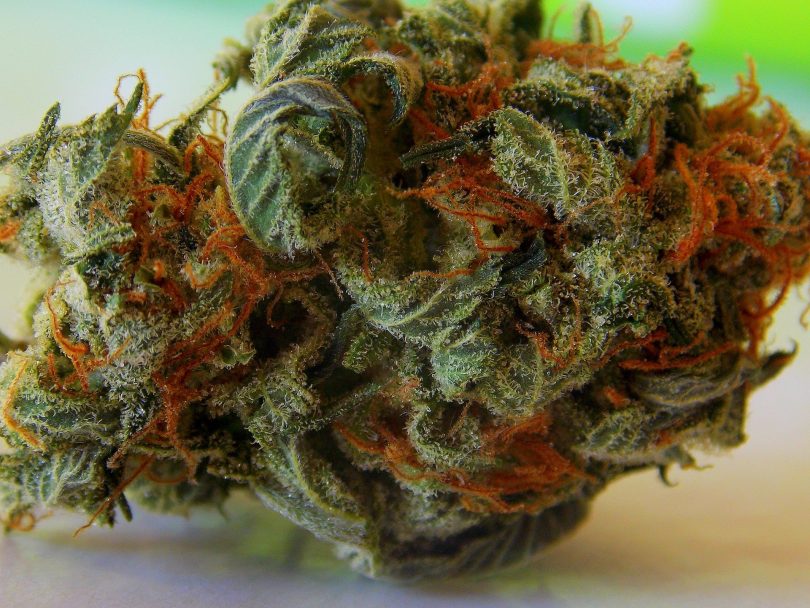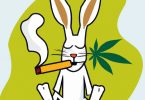Depression affects millions of people globally. Coupled with anxiety disorders, the two are the most prevalent mental conditions. Unfortunately, the pharmaceutical drugs used to treat these conditions often cause severe side effects and addiction in some cases. [1]
A review published in Current Neuropharmacology in 2020 has drawn out some key observations on the potential ensemble benefits offered by terpenes for treating psychiatric disorders. [2] Below is a glimpse of the findings.
The endocannabinoid system (ECS) has been largely implicated in mood regulation and consequently in the treatment of depression, anxiety, and bi-polar disorders.
The two most studied phytocannabinoids are Δ9-tetrahydrocannabinol (THC) and cannabidiol (CBD). So far, it’s been demonstrated that these compounds interact with the ECS via cannabinoid receptors in different ways through different mechanisms.
CBD has shown higher effectiveness in relieving mood disorders such as anxiety [3] and depression, routinely demonstrating antidepressant and anti-anxiety effects in animal models. [4,5] In mouse models, THC has shown mild antidepressant-like effects which are more prominent on males more than on females. [6] In humans, combined THC and CBD exhibit anti-depressant and anti-stress effects. [7]
What About Terpenes?
Preliminary studies on terpenes have shown potential in treating psychiatric conditions. [8] One study showed anti-anxiety effects produced by terpenes present in propolis essential oil. [9] A systemic review of anti-anxiety effects of essential oils also showed similar positive results. [10]
One essential oil, Lavendula angustifolia (English Lavender), has shown such effects in controlled clinical trials. [11] Other essential oils with similar effects in clinical trials include Citrus synesis (sweet orange) [12] and bergamot oil [13]. Further research is needed to investigate the potential antidepressant activity of these essential oils and their terpenes.
Mode of Action
Research has shown that most essential oils exert anti-anxiety effects in a way that’s different from benzodiazepines. For example, the effects of D-limonene are not blocked by flumazenil, which is a benzodiazepine inhibitor. [14] This provides hope for a treatment option with reduced risk for addiction.
A different study showed that linalool and β-pinene exhibit antidepressant-like effects by interacting with the monoaminergic system. [15] Consequently, caution needs to be exercised when administering monoaminergic antidepressants concurrently with terpenes.
Entourage/Ensemble Effects
In cannabis, entourage or ensemble effects refer to enhanced positive effects that are produced when terpenes are combined with cannabinoids (or when multiple cannabinoids or multiple terpenes potentiate each other). [16] It can be described beautifully in the common phrase “the whole is greater than the sum of parts.” It has also been described as “botanical synergy.”
The researchers concluded that further research is needed to paint a clearer picture on the role of entourage benefits offered by terpenes in the treatment of anxiety and depression. For now, we remain cautiously optimistic that this could provide a safe option with few side effects and low risk for addiction as compared to conventional treatments for psychiatric disorders. [2]
Image source
MariaHuxley from Pixabay
References
- Pierre JM. Abuse of psychiatric medications: Not just stimulants and benzodiazepines. Current Psychiatry. 2019;18(1):10-16,21-24,26,38. Journal Impact Factor n/a; Times Cited: 3 (Semantic Scholar)
- Ferber SG, et al. The “Entourage Effect”: Terpenes coupled with cannabinoids for the treatment of mood disorders and anxiety disorders. Current Neuropharmacology. 2020;18(2):87–96. Journal Impact Factor 4.668; Times cited 9 (Semantic Scholar)
- Abrams DI. The therapeutic effects of Cannabis and cannabinoids: An update from the National Academies of Sciences, Engineering and Medicine report. European Journal of Internal Medicine. 2018;49:7–11. Journal Impact Factor 3.66: Times cited 82 (Semantic Scholar)
- Blessing EM, et al. Cannabidiol as a potential treatment for anxiety disorders. Neurotherapeutics. 2015;12(4):825-36. Journal Impact Factor 4.084: Time cited 227 (Semantic Scholar)
- Zanelati TV, Biojone C, Moreira FA, Guimarães FS, Joca SRL. Antidepressant-like effects of cannabidiol in mice: Possible involvement of 5-HT 1A receptors. Br J Pharmacol. 2010;159(1):122-8. Journal Impact Factor 7.73; Times Cited: 189 (Semantic Scholar)
- Silva L, et al. Sex and age specific effects of delta-9-tetrahydrocannabinol during the periadolescent period in the rat: The unique susceptibility of the prepubescent animal. Neurotoxicology and Teratology. 2016;58:88–100. Journal Impact Factor 3.274: Times cited: 26 (Semantic Scholar)
- Cuttler C, et al. A naturalistic examination of the perceived effects of cannabis on negative affect. Journal of Affective Disorders. 2018;235:198–205. Journal Impact Factor 3.892; Times cited 35 (Semantic Scholar)
- Perry N, Perry E. Aromatherapy in the management of psychiatric disorders. CNS Drugs. 2006;20(4):257-80. Journal Impact Factor 4.786; Times Cited: 162 (Semantic Scholar)
- Li Y-J, et al. Therapeutic effects of propolis essential oil on anxiety of restraint-stressed mice. Human & Experimental Toxicology. 2012;31(2):157–165. Journal Impact Factor 2.171: Times cited 23 (Semantic Scholar)
- de Sousa DP, et al. A systematic review of the anxiolytic-like effects of essential oils in animal models. Molecules (Basel, Switzerland). 2015;20(10):18620–18660. Journal Impact Factor 3.267; Times cited 54 (Semantic Scholar)
- Yap WS, Dolzhenko AV, Jalal Z, Hadi MA, Khan TM. Efficacy and safety of lavender essential oil (Silexan) capsules among patients suffering from anxiety disorders: A network meta-analysis. Sci Rep. 2019;9(1):18042. Journal Impact Factor 3.998; Times cited 2 (Semantic Scholar)
- Goes TC, Antunes FD, Alves PB, Teixeira-Silva F. Effect of sweet orange aroma on experimental anxiety in humans. J Altern Complement Med. 2012;18(8):798-804. Journal Impact Factor 2.256; Times cited 62 (Semantic Scholar)
- Han X, Gibson J, Eggett DL, Parker TL. Bergamot (Citrus bergamia) essential oil inhalation improves positive feelings in the waiting room of a mental health treatment center: a pilot study. Phytother Res. 2017;31(5):812-816. Journal Impact Factor 4.087; Times cited 16 (Semantic Scholar)
- Lima NG, De Sousa DP, Pimenta FC, et al. Anxiolytic-like activity and GC-MS analysis of (R)-(+)-limonene fragrance, a natural compound found in foods and plants. Pharmacol Biochem Behav. 2013;103(3):450-454. Journal Impact Factor 2.519; Times cited 66 (Semantic Scholar)
- Guzmán-Gutiérrez, et al. Linalool and β-pinene exert their antidepressant-like activity through the monoaminergic pathway. Life Sciences. 2015;128: 24–29. Journal Impact Factor 3.647: Times Cited 67 (Semantic Scholar)
- Russo EB. Taming THC: Potential cannabis synergy and phytocannabinoid-terpenoid entourage effects. B J. Pharmacol. 2011;163(7):1344–64. Journal Impact Factor: 7.73; Times Cited: 665 (Semantic Scholar)








